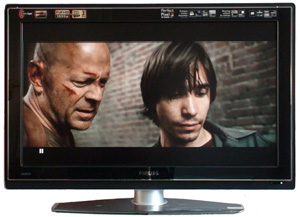
The Philips 37PFL9632D review is now complete. Due to popular demand, I have added an “Input Lag” test under the “Benchmark” section, which will be performed on all the HDTVs we review in the future (whenever feasible). The methodology is as follows:
* Ideally the reference screen should be a CRT which in theory exhibits the least input lag at baseline, but unfortunately I don’t own one that accepts HDMI input. That said, as long as the same HDTV is used as reference point, then this should provide a consistent framework for comparison. I am using a Samsung LE52F96BD set to [Game Mode], because this set is likely to be with me for some time.